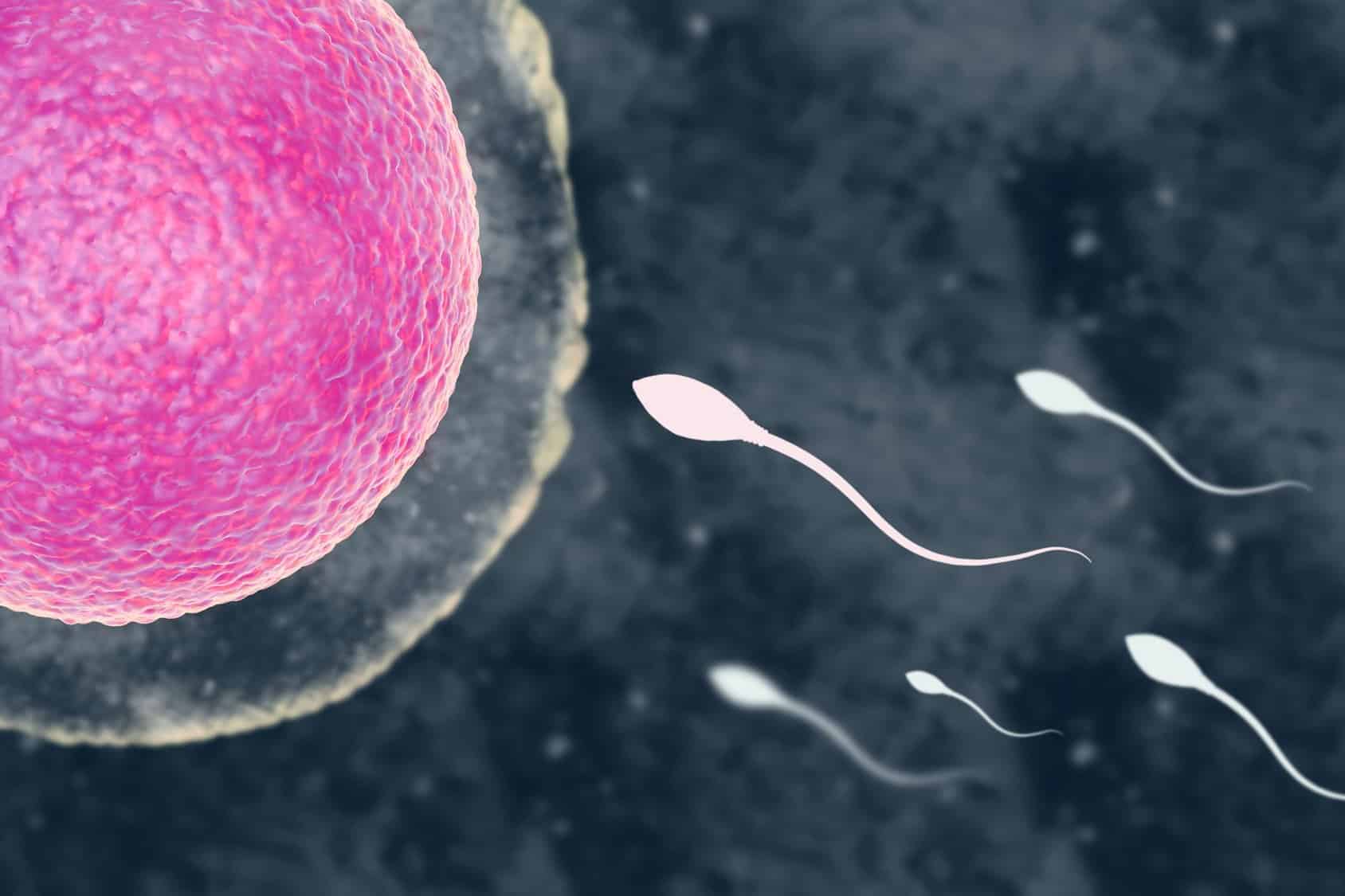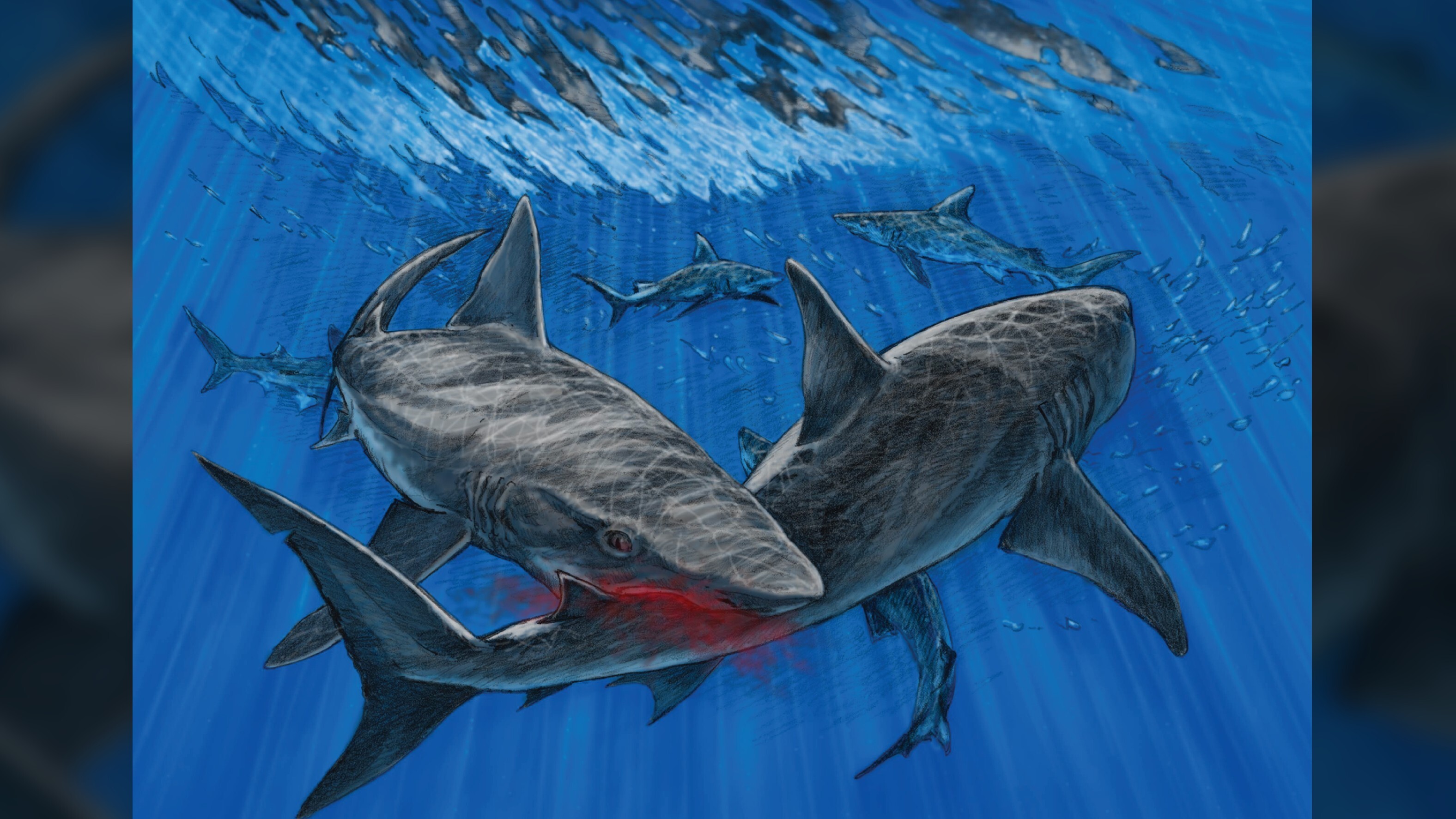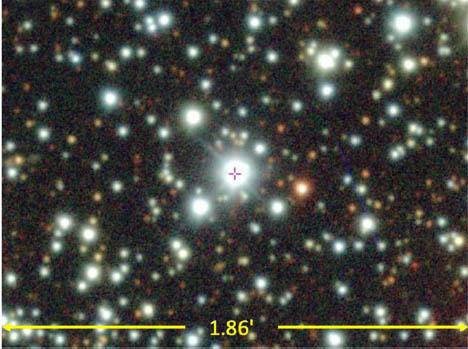HIP 81208 is the first binary stellar system with substellar companions around each stellar component ever found by direct imaging.
Astronomers thought HIP 81208 was a system consisting of a massive central star (A, the central bright spot), a brown dwarf (B) circling around it, and a low-mass star (C) orbiting further away. However, Chomez et al. revealed an object (Cb), approximately 15 times more massive than Jupiter, orbiting around the smaller of the two stars (C). Image credit: ESO / Chomez et al.
HIP 81208 is a young binary system located 149 parsecs (486 light-years) away in the constellation of Scorpius.
Otherwise known as HD 149274 or TIC 280474618, the system is only 17 million years old.
It is a member of the Upper Centaurus-Lupus subgroup of the Scorpius-Centaurus association.
Recently, HIP 81208 was found to host a close-in brown dwarf (HIP 81208B) and a wider red dwarf (HIP 81208C) around the central primary star HIP 81208A.
“The A component is a 2.6-solar-mass B9-type star, the B component is a brown dwarf orbiting HIP 81208A at about 50 astronomical units (AU), and the C component is a low-mass star orbiting HIP 81208A at about 230 AU,” said Observatoire de Paris astronomer Antoine Chomez and colleagues.
“The newly-found companion is orbiting the HIP 81208C component, making HIP 81208 the first binary system with substellar companions around both components ever discovered through direct imaging.”
Named HIP 81208Cb, the newfound object has a mass of 15 Jupiter masses and orbits HIP 81208C at a distance of 20 AU.
“The mass of the newly-found object places it right at the border between planets and brown dwarfs — failed stars that are not massive and hot enough to fuse hydrogen into helium,” the astronomers said.
HIP 81208Cb was discovered in archival data from the Spectro-Polarimetric High-contrast Exoplanet REsearch (SPHERE) instrument installed on ESO’s Very Large Telescope in Chile.
“While many other instruments use indirect methods to hunt for far-flung worlds, SPHERE uses a technique known as direct imaging: what we see here is an actual image of the system,” the researchers said.
“Indeed, this is the first hierarchical quadruple system to be found using direct imaging, which will prove invaluable to understanding how complex systems like this one form and evolve.”
The findings appear in the journal Astronomy & Astrophysics.
_____
A. Chomez et al. 2023. An imaged 15 MJup companion within a hierarchical quadruple system. A&A 676, L10; doi: 10.1051/0004-6361/202347044
Note: This article have been indexed to our site. We do not claim legitimacy, ownership or copyright of any of the content above. To see the article at original source Click Here














